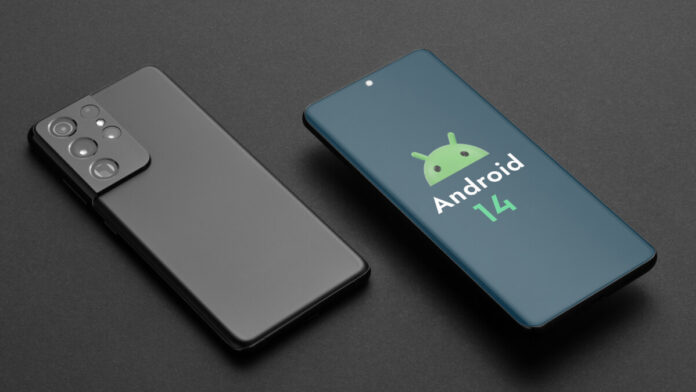The tech world is abuzz with the anticipation of Android 14, the latest iteration of Google’s mobile operating system. With its promise of enhanced performance, improved security, and a plethora of new features, Android 14 is poised to revolutionize the smartphone experience. But one question lingers in the minds of Android enthusiasts: which devices will be compatible with this upcoming software upgrade?
Google has remained tight-lipped about the official list of Android 14 compatible devices, but several manufacturers have hinted at their plans for the update. Based on these indications and industry trends, we can paint a picture of the devices that are likely to receive Android 14.
Google Pixel Devices Take the Lead
As with previous Android releases, Google’s Pixel devices are expected to be the first to embrace Android 14. The Pixel line has always been at the forefront of Android innovation, and this is unlikely to change with the latest update. Owners of Pixel 4a (5G) and later models can rest assured that their devices will be eligible for the upgrade.
Other Manufacturers Follow Suit
Beyond Google’s own devices, several other manufacturers have expressed their commitment to Android 14. Samsung, a leading Android smartphone maker, has indicated that its Galaxy S22, S23, and Z Fold series will receive the update. Similarly, OnePlus has pledged to provide Android 14 for its recent flagship devices, including the OnePlus 10, 10 Pro, and 11.
Here is a more comprehensive list of Android 14 Compatible Devices:
Android 14 Supported Google Pixel Devices:
- Pixel 4a (5G)
- Pixel 5 and 5a
- Pixel 6 and 6 Pro
- Pixel 6a
- Pixel 7 and 7 Pro
- Pixel 7a
- Pixel Fold
- Pixel Tablet
- Pixel 8 and 8 Pro
Android 14 Supported Samsung Devices:
- Galaxy S22 / S22+ / S22 Ultra
- Galaxy S21 / S21+ / S21 Ultra
- Galaxy S21 FE
- Galaxy Z Fold 4 / Z Flip 4
- Galaxy Z Fold 3 / Z Flip 3
- Galaxy S23 / S23+ / S23 Ultra
- Galaxy S24 / S24+ / S24 Ultra
Android 14 Supported Xiaomi Devices:
- Xiaomi 12 / 12 Pro / 12T / 12T Pro / 12S / 12S Pro / 12S Ultra / 12 Lite
- Xiaomi 13 / 13 Pro / 13 Ultra / 13 Lite
- Xiaomi Mix Fold 2
- Xiaomi Civi 1S / 2 / 3
- Xiaomi Pad 6 / 6 Pro
- Xiaomi 14 / 14 Pro / 14 Ultra
Android 14 Supported Redmi Devices:
- Redmi Note 11R / 11T Pro / 11T Pro+
- Redmi Note 12 / 12 Pro / 12 Pro+ / 12 Pro Speed / 12 S / 12 Turbo
- Redmi Note Discovery
- Redmi K40S
- Redmi K50 / K50 Pro / K50 Gaming / K50i / K50 Ultra
- Redmi K60 / K60E / K60 Pro
- Redmi Note 13 / 13 Pro / 13 Ultra
- Redmi Note 14 / 14 Pro / 14 Ultra
Other OEMs:
- OnePlus 10 Pro
- OnePlus 11 Pro
- OnePlus 12 Pro
- Sony Xperia 1 IV
- Sony Xperia 1 V
- Asus ROG Phone 6
- Asus ROG Phone 7
- Motorola Edge+ (2023)
- Motorola Edge+ (2024)
- Google Tensor G2 devices (to be announced)
Mid-Range and Budget Devices: A Mixed Bag
The compatibility picture for mid-range and budget devices is less clear. While some manufacturers, such as Xiaomi and Motorola, have shown a willingness to update older devices to newer Android versions, others may prioritize their latest models. It’s advisable to check with the specific manufacturer for compatibility information.
Factors Influencing Compatibility Decisions
Several factors influence a manufacturer’s decision to update a device to a newer Android version. These include:
Hardware Specifications: Newer Android versions often demand more powerful hardware, making it challenging for older devices to run them smoothly.
Software Support Cycles: Manufacturers typically commit to providing software updates for a specific period. Devices nearing the end of their support cycle may not be eligible for the latest Android upgrade.
Market Dynamics: Manufacturers may prioritize updating devices that are popular in their target markets, ensuring that their software reaches a wider audience.


